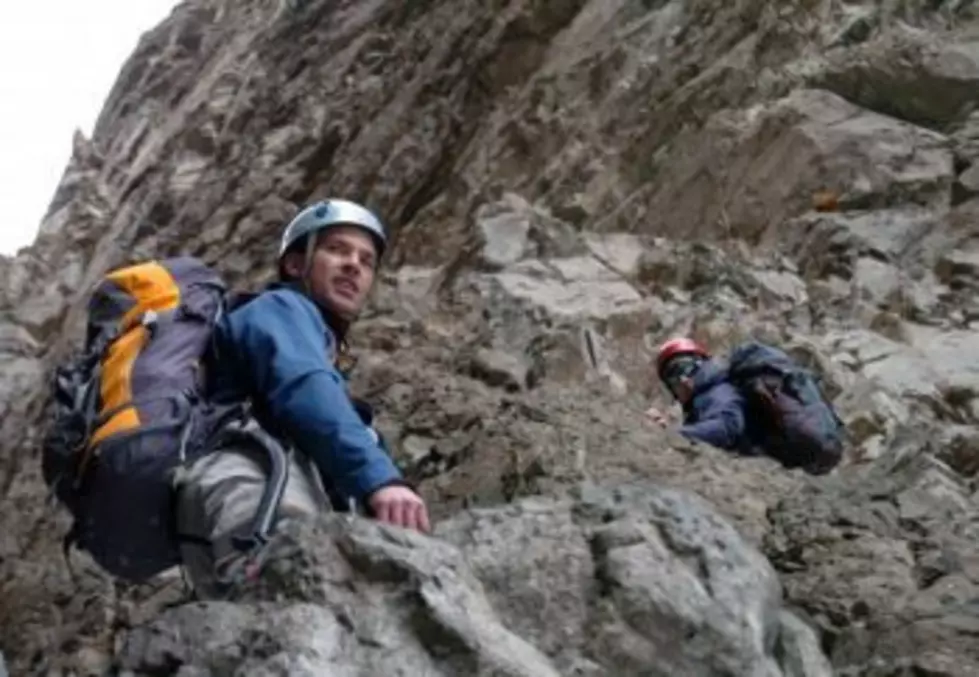
Groups propose rock climbing plan in advance of Bitterroot NF proposal
As the Bitterroot National Forest prepares to release a draft climbing management plan, more than a dozen stakeholders have gotten a jump on the agency by writing one of their own.
After holding almost monthly public meetings between June and December, Stevensville District Ranger Steve Brown and his staff have been creating a climbing management plan to be revealed on March 23. At that time, those who have participated in the public meetings will weigh in on the initial effort.
The need for a plan is great as more people flood to the region to recreate and take up residence and locals become more concerned about user conflicts and damage to natural attributes and wildlife. Following the lead of other more populated areas, the Bitterroot National Forest decided now is the time to develop a plan to promote sustainable climbing before it gets too out-of-hand.
But, in what is possibly a unique proactive move, representatives from 16 environmental groups submitted their own Citizens’ Climbing Management Plan to Brown this week and asked that the public be allowed to comment on their plan as an alternative to whatever Brown puts out. Normally, the public process is more reactive, where the agency puts out a draft proposal, the public gets to comment, and then the agency puts out a final plan that sometimes incorporates comments the agency considers valid.
“The Forest Service has asked for suggestions and input during the process. I would suspect some of the other things that the FS brings forward we’re going to agree with. I bet there’s some real similarities in the things that are put forth,” said Friends of the Bitterroot member Gary Milner.
Taking cues from 17 existing climbing plans, such as those for Rocky Mountain National Park and Idaho’s Castle Rocks State Park, the Citizens’ Climbing Management Plan covers many aspects related to recreational climbing on public lands.
But the three key aspects the groups want to promote are requiring the national forest to complete a full inventory of existing climbing routes; creating an authorization system for those climbers wanting to install permanent anchors; and a requirement for a half-mile buffer zone around all raptor nests to protect breeding pairs and young.
Locals say the canyons of the Bitterroot are already getting that loved-to-death feel. Instead of sticking to established routes, some climbers want to come in and create new routes with anchored tie-downs, turning wild areas into gymnasiums and damaging the rock face. In Mill Creek Canyon, climbers developed some sport routes with climbing bolts that brought in more climbers, visitors and associated impacts.
That concerned some, because the area is a recommended wilderness, and the degradation could affect the wilderness designation.
"Climbing in Wilderness requires that we accept the Wilderness on its own terms. Modifying the Wilderness to suit our personal demands not only is inappropriate and unlawful, but it also cheapens the climbing experience,” said Wilderness Watch Executive Director George Nickas. The Citizens Climbing Management Plan preserves the opportunity for an authentic wilderness experience and preserves the Wilderness for humans and wildlife alike."
The proposed authorization system would require climbers to be educated on raptor and Native American sites. The half-mile buffer could be lifted for those nesting sites the Forest Service determines aren’t being used during a season.
“I think there’s universal acceptance about what we’re proposing about raptors and the 800-meter buffer zone. All the things we’ve proposed are standard practices around the country so climbers are used to those practices wherever they go. That’s one of the strongest aspects of the citizens’ management plan,” Milner said.
Peregrine falcons have been observed in 17 canyons of the Bitterroot Mountains, but bird watchers are concerned that populations could be affected if climbers get too close and startle parents off the nest.
However, in previous meetings, rock climbing groups such as the Access Fund, have questioned the half-mile buffer, saying climbers can get closer to nests without bothering the birds if they’re concealed by rock projections.
It’s uncertain at this point what Brown and his staff will do with the citizens’ plan or what ideas the Forest Service plan will propose. It’s still early in the public process, so much can change between now and the final decision.
Brown said in June that the final plan has to be something everyone can get behind. Otherwise, it will just devolve from a management issue into an enforcement issue.
With social media prompting more people to try new sports, Milner said more national forests and state parks are realizing they need to write climbing management plans. So the Bitterroot plan could be another template people turn to.
“The groups that have been involved in the citizens’ climbing management plan have expressed concern that some of the same things are going on (around the country). I think that’s why they signed onto this,” said Gary. “They recognize that the Forest Service will be instituting some rules and regulations. I think people across the country recognize that sport climbing is a growing sport and regulations are coming.”
The supporting organizations include Wilderness Watch, Bitterroot Audubon, Montana Peregrine Institute, Friends of the Bitterroot, Friends of the Clearwater, Swan View Coalition, Friends of the Wild Swan, Flathead Lolo Bitterroot Task Force, Native Ecosystems Council, Alliance for the Wild Rockies, WildEarth Guardians, Conservation Congress, Gallatin Wildlife Association, Sequoia ForestKeeper, Gallatin Yellowstone Wilderness Alliance and Great Old Broads for Wilderness.
Contact reporter Laura Lundquist at lundquist@missoulacurrent.com.
